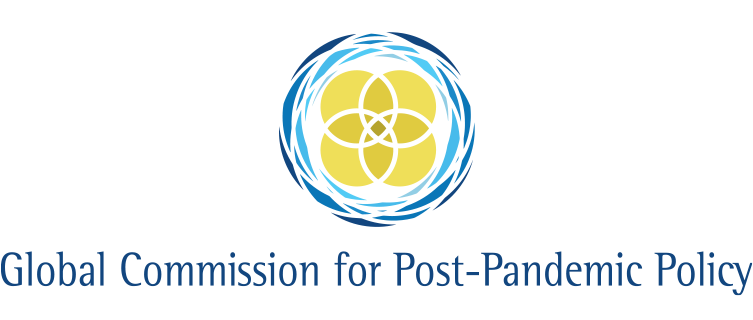Research Monitor
January 19th 2021
Health
The Coronavac vaccine
On January 12th, the Butantan Institute in Brazil published in the journal Nature the results of a large Phase III clinical trial of China’s leading vaccine candidate, CoronaVac. The results––which contradict two previous studies––have prompted uncertainty over the vaccine’s true efficacy.
Developed by the Beijing-based company Sinovac, the CoronaVac vaccine is a traditional “inactivated” vaccine. This means that it consists of killed viral particles, rather than a “live” but weakened version of the virus. The vaccine is currently in late-stage clinical trials in Indonesia, Turkey, Brazil and Chile. On December 24th, Turkey published the interim results of an analysis of 1,322 volunteers from its late-stage trial. The interim data pegged the vaccine’s efficacy at 91.3%––high by any standards. On January 6th, a separate interim analysis by Indonesia gave a much more modest efficacy of 65.3%, however.
The Brazilian study consists of 12,508 volunteers, including 9,200 healthcare workers. It was hoped that this more comprehensive trial might provide support for either the Turkish or Indonesian result. No such luck. The trial’s newly published results suggest that CoronaVac has an efficacy of just 50.4% in preventing mild to severe cases of COVID-19. This is substantially lower than the approximately 95% efficacy of both the Pfizer-BioNTech and Moderna vaccines, and barely passes the minimum bar necessary for approval by the WHO. This finding has raised difficult questions: both about the possibility of inconsistent protection afforded by the vaccine and the methodologies used in the studies.
Nevertheless, on January 11th, the Indonesian Food and Drug Monitoring Agency (BPOM) approved emergency-use authorization for CoronaVac––making it the first country to do so. Turkey and Brazil soon followed suit, on January 13th and 17th, respectively. •
Post-infection immunity
A new paper published on the medRxiv––a preprint server––and also featured by the journal Nature presents the interim results of one of the most detailed studies yet of long-term COVID-19 immunity. The paper confirms that people who contract and recover from the disease are likely to be immune for several months afterward.
Over the past year, reports of people experiencing repeat infections with SARS-CoV-2––the virus that causes COVID-19––have raised questions about the human immune system’s sustained ability to recognise and respond to the virus. To investigate the extent of immunity to the virus, Susan Hopkins, a senior medical adviser at Public Health England in London and a large team of collaborators recruited 20,000 health workers from public hospitals in the United Kingdom. The academics then performed a COVID-19 test on each participant every 2-4 weeks over the course of five months.
Of the 6,614 volunteers who had previously tested positive for COVID-19, only 44 reinfections were detected. This compares with 318 new infections in the 14,173 volunteers who had not previously contracted the virus. This means that a prior history of COVID-19 infection appears to be associated with an 83% lower risk of infection in the five months after the initial infection––comparing favourably with the immunity granted by vaccination.
Economics
A new paper published in the American National Bureau of Economic Research (NBER) Working Paper Series investigates whether the Paycheck Protection Program (PPP)––an American COVID-19 stimulus measure––adequately reached minority communities in the country.
Between February and April 2020, the number of working business owners in the United States plummeted from 15.0 million to 11.7 million––a figure that has since only partially rebounded. In response, the United States government established the Paycheck Protection Program (PPP) to mitigate the impact of business closures caused by the COVID-19 crisis by providing loans to help businesses keep their workforces employed.
In the early-stages of the pandemic, business owner activity fell by 41% among African-Americans, 32% among Latinos/Latinas––but only 17% among white business owners. To investigate whether the PPP adequately reached minority communities, Robert Fairlie of the University of California, Santa Cruz, and Frank Fossen of the University of Nevada, Reno, looked at detailed ZIP code level geographic data on PPP loan disbursal.
The results were not encouraging. There was a slight positive relationship between the number of loans received per business and the minority share of the population in the area. However, businesses in minority areas were allocated smaller amounts, with notably a lower amount of monetary support per employee. In addition, businesses in areas with a high minority population received support much later on average than their counterparts in predominantly white areas––mostly in the second round of funding, rather than the first.
Given the disproportionate impact of COVID-19 on minority owned businesses, the results suggest that minority communities were far from adequately supported by the PPP.
Politics
A new paper published by the Centre for Economic Policy and Research (CEPR), a UK-based network of economists, investigates the impact of “corona populism”––politics aimed at denying or downplaying the danger posed by COVID-19––on the evolution of the COVID-19 pandemic in Austria.
In Austria, the Freiheitliche Partei Österreichs (Freedom Party of Austria, FPO) were the first political party to demand strict measures in response to the COVID-19 pandemic. However, by April the party had done an abrupt about-turn––much like other right-wing parties around the world––demanding an end to restrictions imposed to curb the spread of the virus. The party even went so far as to encourage supporters not to take part in the government’s mass testing program, implemented just before Christmas.
To test whether there was a relationship between the FPO’s rhetoric and the progression of the pandemic, Patrick Mellacher from the University of Graz compared the district-level vote-share received by the FPO in Austria’s last parliamentary elections with the district-level case numbers and death rates. The results were stark. The share of the vote received by the FPO was a strong predictor of that district’s number of COVID-19 deaths per capita. That result is robust under controls for age, demographics and socioeconomic conditions.
Interestingly, the same relationship does not appear to hold for total case numbers, however. The author speculates that this might represent a self-selection bias in who chooses to get tested, resulting in the underestimation of case numbers in FPO strongholds.
Photo by Hakan Nural on Unsplash
GCPPP Newsletter
We now publish a weekly newsletter to inform friends and supporters of the Global Commission’s progress and to provide updates when new content is published. Please sign up here:







